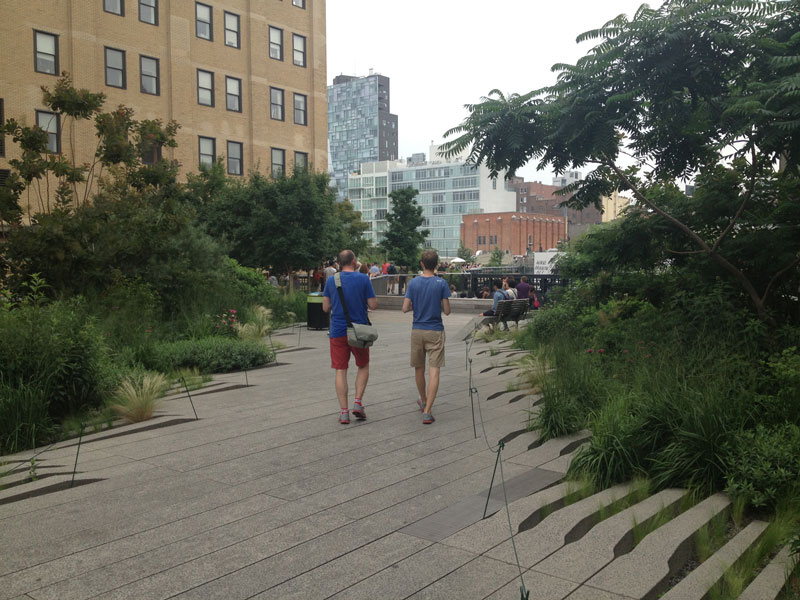When we think of biophilic design, we think of nature. Its primary intention to reintroduce nature into our built environments. Yet much of the project and literature focus of biophilic design has been on interior environments. What about applications of biophilic design to the external built environment?
There is a noticeable bias towards architecture and a deficit in acknowledging the varied applications of biophilic design in landscape architecture.
It is easy to understand why, however, when we spend up to 90% of our time indoors, away from nature. But landscape itself has a role to play, and exploring these applications further could enhance the general public’s understanding of biophilic design.
Movement
Landscape, whether urban or rural, is the medium through which we move, from space to space, building to building. The experience of the journey between these spaces and buildings is crucial to their success.

The Highline in New York by James Corner Field Operations
Landscape architects are well versed in creating spaces that facilitate movement and have intuitively been implementing patterns of biophilic design in their work, such as prospect, refuge and mystery. These patterns are vital for drawing users into a space, through a space, to a destination, while also making them feel safe and in control. These patterns can be seen in the literature of Jacobs, Gehl, Sussman and Hollander. By making our landscapes more biophilic, they will be perceived as safer, comfortable and more enticing.
Views to nature
With restrictions on the forms of biophilic design that can be accommodated in interior settings, external views to nature become necessary to establish interior restorative environments. However, creating external views to nature is pointless if there is no nature.

The Highline in New York by James Corner Field Operations
A designer may accommodate external views through nearby windows for occupants to create a biophilic environment, but landscape architects play a vital role in creating those same views. These views to nature also illicit stronger responses in occupants than natural analogues do, which are used to a large degree in interior settings, as our brains can tell the difference between representational and ‘actual’ nature. So in practice, landscape architecture has a role to play in creating biophilic environments inside and out.
A network of micro-restorative spaces
In a wider urban context, landscape can bring biophilic environments to a wider population, enhancing health and well-being on a larger scale. While land and space within urban areas is in short supply and at a premium, biophilic design doesn’t require large amounts of space.
In fact, according to a study by Richard A Fuller (et al) in 2007, psychological benefits of green space had a stronger increase with higher levels of biodiversity, than an increase in green space area. Added to this, the process of ‘restoration’, that occurs from interacting with natural environments, is accumulative. So multiple, micro-restorative spaces or pocket parks could provide psychological restoration for an urban population. Such spaces could be integrated into larger green infrastructure strategies for cities.
While landscape architects have numerous advantages to offer the emerging field of biophilic design, there are several obstacles. For one, there is a distinct knowledge deficit on the subject of biophilic design within the profession. In addition, a general lack of awareness of biophilic design and its benefits also exists. These obstacles can be overcome in time however, by incorporating biophilic design into University curricula on landscape architecture courses and through Continuing Professional Development (CPD) events.
It goes without saying, we need biophilic environments inside and out.
2 responses to “The Role of Landscape Architecture in Creating Biophilic Environments”
Hi,
This is in an excellent article and something I hope to build upon myself as a current Masters Landscape Architecture student at Leeds Beckett University.
I would love to hear, and read, more about the development of biophilic design. It is something I intend to look into much more thoroughly and to apply in my current project for a design based in northern Amsterdam. If you had any more information on this fascinating topic I would love to hear your thoughts and views.
Many thanks
Jay
Why cant I find formal training on this discipline?